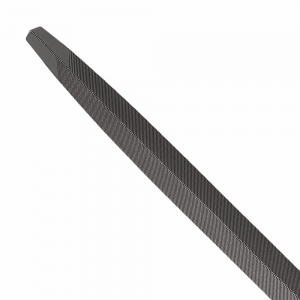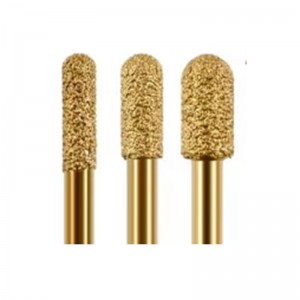Brazed grinding head
Brazed grinding head

Basic Details
According to the different melting points of solder, brazing can be divided into soft soldering and hard soldering.
Soldering
Soft soldering: the melting point of the solder for soft soldering is lower than 450 ° C, and the joint strength is lower (less than 70 MPa).
Soft soldering is mostly used for the welding of conductive, airtight and watertight devices in the electronic and food industries. Tin welding with tin-lead alloy as filler metal is most commonly used. Soft solder generally needs to use flux to remove oxide film and improve the wettability of solder. There are many kinds of soldering fluxes, and rosin alcohol solution is often used for soldering in electronic industry. The residue of this flux after welding has no corrosive effect on the workpiece, which is called non-corrosive flux. The flux used for welding copper, iron and other materials is composed of zinc chloride, ammonium chloride and vaseline. When welding aluminum, fluoride and fluoroborate are used as brazing fluxes, and hydrochloric acid and zinc chloride are also used as brazing fluxes. The residue of these fluxes after welding is corrosive, called corrosive fluxes, and must be cleaned after welding.
Brazing
Brazing: the melting point of brazing filler metal is higher than 450 ° C, and the joint strength is higher (greater than 200 MPa).
Brazed joints have high strength, and some can work at high temperature. There are many kinds of brazing filler metals, and aluminum, silver, copper, manganese and nickel-based brazing filler metals are the most widely used. Aluminum base filler metal is often used for brazing aluminum products. Silver-based and copper-based solders are commonly used for brazing copper and iron parts. Manganese-based and nickel-based solders are mostly used to weld stainless steel, heat-resistant steel and superalloy parts that work at high temperatures. Palladium-based, zirconium-based and titanium-based solders are commonly used for welding refractory metals such as beryllium, titanium, zirconium, graphite and ceramics. When selecting the filler metal, the characteristics of the base metal and the requirements for the joint performance should be considered. Brazing flux is usually composed of chlorides and fluorides of alkali metals and heavy metals, or borax, boric acid, fluoroborate, etc., which can be made into powder, paste and liquid. Lithium, boron and phosphorus are also added to some solders to enhance their ability to remove oxide film and wetting. Clean the residual flux after welding with warm water, citric acid or oxalic acid.
Note: The contact surface of the base metal should be clean, so the flux should be used. The function of brazing flux is to remove oxides and oil impurities on the surface of the base metal and filler metal, protect the contact surface between the filler metal and the base metal from oxidation, and increase the wettability and capillary fluidity of the filler metal. The melting point of the flux shall be lower than that of the solder, and the corrosion of the flux residue on the base metal and joint shall be less. The commonly used flux for soft soldering is rosin or zinc chloride solution, and the commonly used flux for brazing is a mixture of borax, boric acid and alkaline fluoride.
Application and feature editing and broadcasting
Brazing is not suitable for the welding of general steel structures and heavy and dynamic load parts. It is mainly used for manufacturing precision instruments, electrical components, dissimilar metal components and complex thin plate structures, such as sandwich components, honeycomb structures, etc. It is also commonly used for brazing various dissimilar wire and cemented carbide tools. During brazing, after the contact surface of the brazed workpiece is cleaned, it is assembled in the form of overlap, and the filler metal is placed near the joint gap or directly into the joint gap. When the workpiece and solder are heated to a temperature slightly higher than the melting temperature of the solder, the solder will melt and soak the surface of the weldment. The liquid filler metal will flow and spread along the seam with the help of capillary action. Therefore, the brazed metal and filler metal are dissolved and infiltrated into each other to form an alloy layer. After condensation, the brazed joint is formed.
Brazing has been widely used in mechanical, electrical, instrumentation, radio and other departments. Carbide tools, drilling bits, bicycle frames, heat exchangers, conduits and various containers; In the manufacturing of microwave waveguides, electronic tubes and electronic vacuum devices, brazing is even the only possible connection method.
Features of brazing:
Brazed diamond grinding wheel
Brazed diamond grinding wheel
(1) The brazing heating temperature is low, the joint is smooth and flat, the change of microstructure and mechanical properties is small, the deformation is small, and the workpiece size is accurate.
(2) It can weld dissimilar metals and materials without strict restrictions on the thickness difference of the workpiece.
(3) Some brazing methods can weld multiple weldments and joints at the same time, with high productivity.
(4) Brazing equipment is simple and production investment is low.
(5) The joint strength is low, the heat resistance is poor, and the requirements for cleaning before welding are strict, and the price of solder is expensive.











